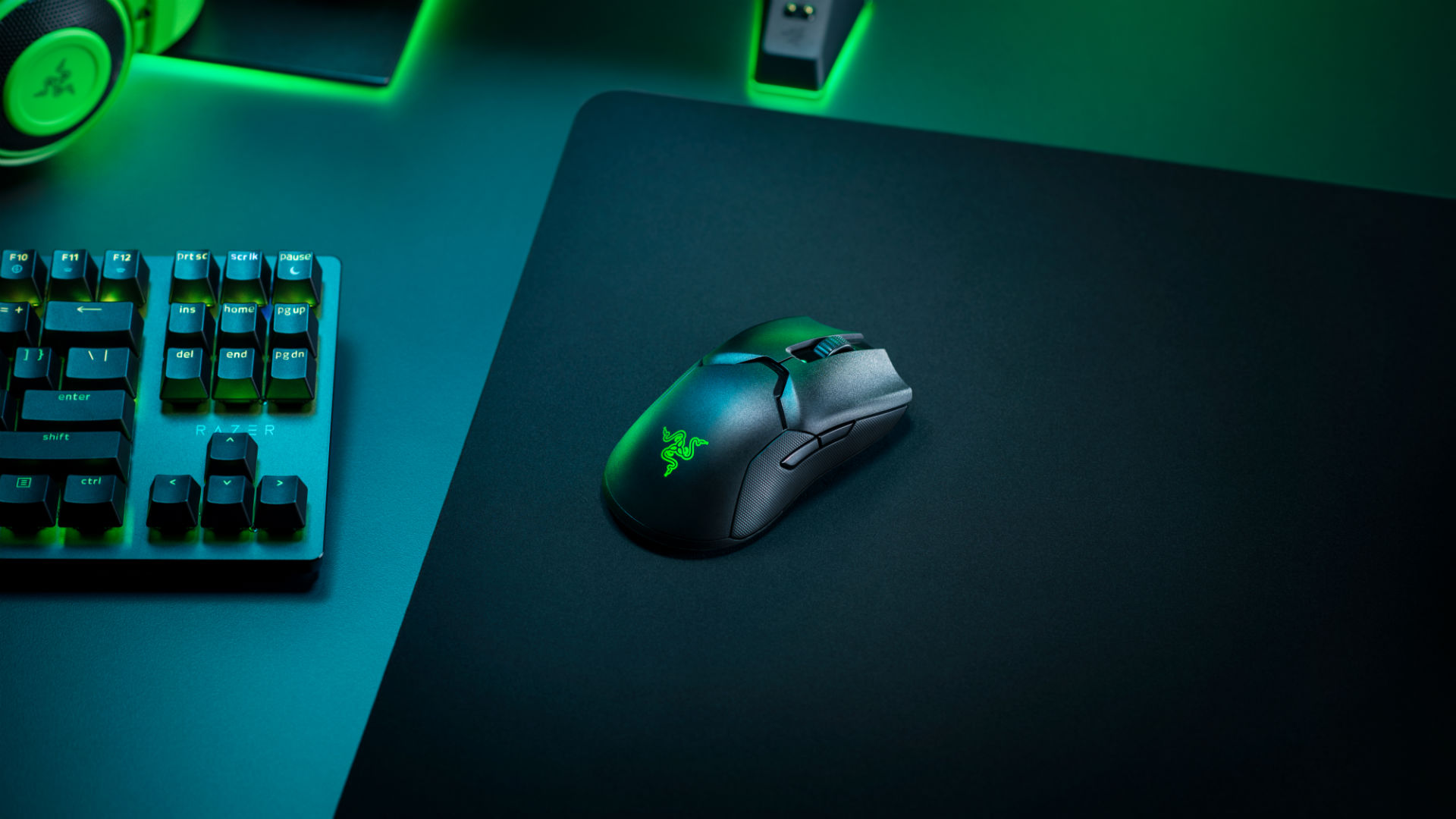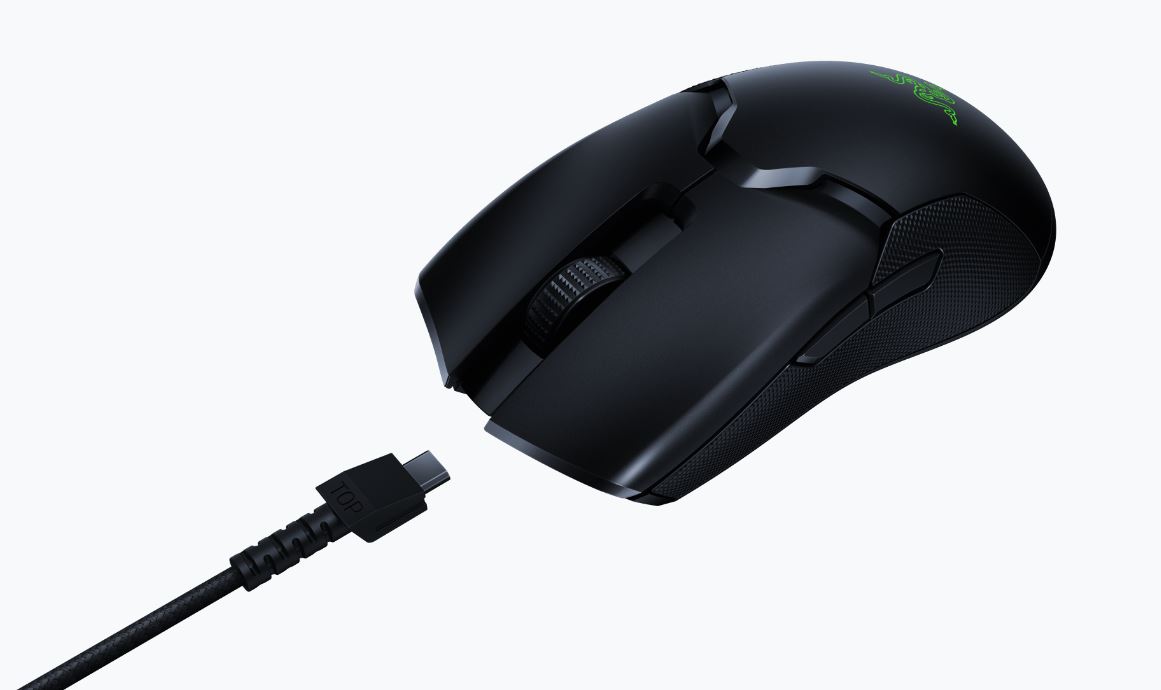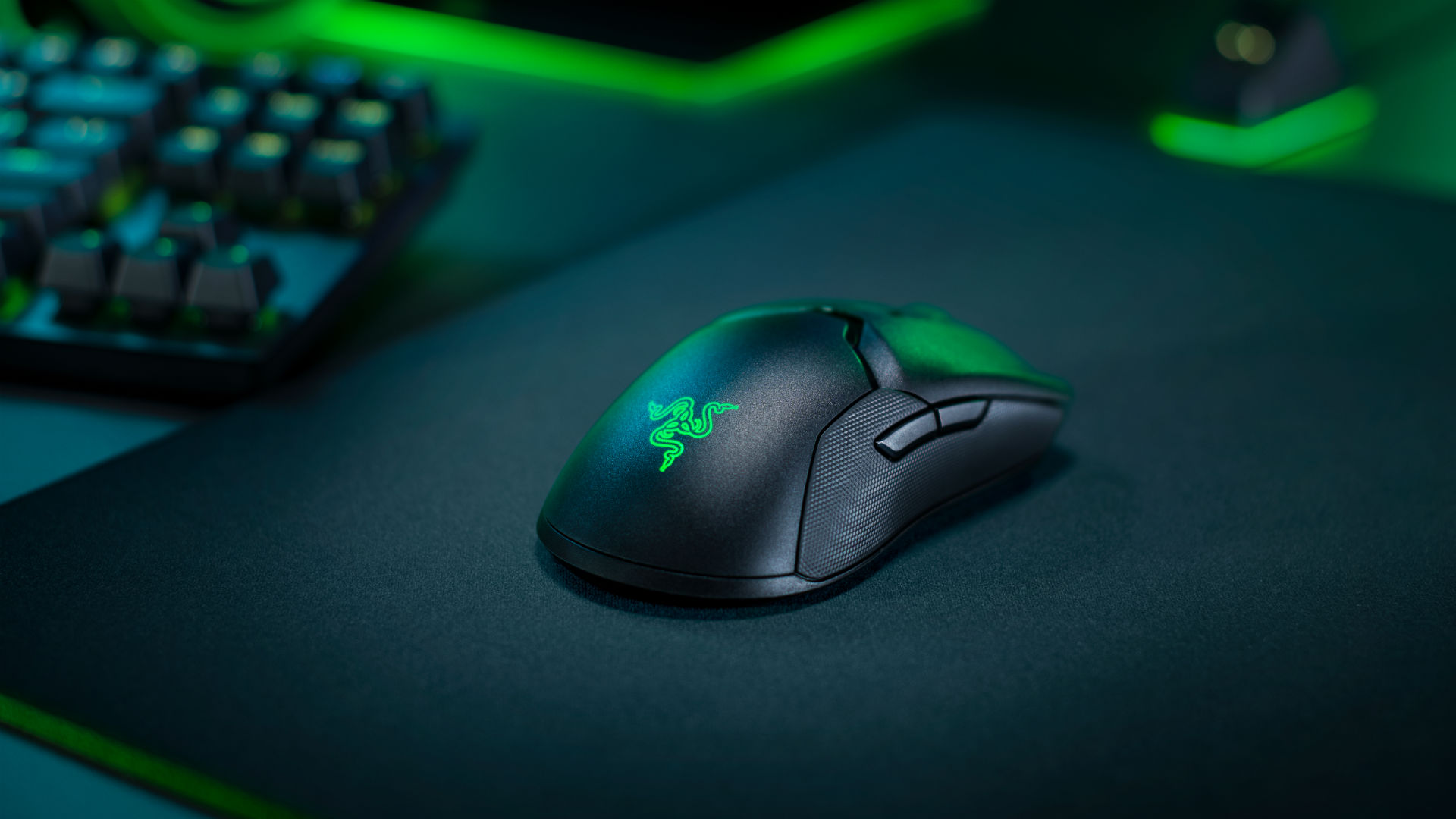Our Verdict
Razer’s new Focus+ Optical Sensor puts the Viper Elite at the top of the wireless pile. Some of its buttons fail to live up to its hefty price tag, but its long battery life and elegant, ambidextrous design more than make up for it.
For
- 20K CPI sensor is the best we’ve seen
- Light in the hand, with a grippy finish
- Ambidextrous
- Long battery life
Against
- Expensive ($150/£150)
- Right and left clicks feel a touch flimsy
- Fewer programmable buttons than competitors
PC Gamer's got your back
Razer has gone all-out with its Viper Ultimate mouse, cramming in new wireless tech and an improved optical sensor into a slim, ambidextrous body. The result, while not perfect, is the best wireless gaming mouse you can buy right now, and it feels as responsive as any wired mouse I’ve used. You’re paying for that quality— it costs a hearty $150/£150—but if you’re going to splurge on a lightweight wireless mouse in 2019, the Viper Ultimate is your best bet. It’s a real contender to the Logitech G502 Lightspeed’s wireless throne.
It starts with the Razer Focus+ Optical Sensor, a new bit of kit Razer has slotted into both this mouse and the Basilisk Ultimate. The Basilisk is the bigger of the two, and comes with more customisable buttons, while the Viper Ultimate is slimmer and ambidextrous. The sensor runs up to 20,000 DPI/CPI—higher than anything you’ll find on our best gaming mouse list.
It also boasts a tracking speed of up to 650 IPS (inches per second). For comparison, our current favorite wireless mouse, the Logitech G502 Lightspeed, is rated up to 400 IPS, meaning the Viper Ultimate has a higher ceiling for tracking faster movements. The Viper Ultimate has a resolution accuracy of 99.6%: that’s higher than the Razer Deathadder Elite, arguably the best wired mouse on the market, which sits at 99.4%.
The Viper Ultimate is also loaded with Razer’s HyperSpeed Wireless transmission tech, which it claims is 25% faster than competitors. According to Razer, you should be able to achieve latencies of less than 0.2ms, which is essentially the same as the wired version of the Viper. In other words, it should perform just as well as the best wired mice. And thankfully, it does just that.

I mainly tested it in Fortnite, where you need to snap to targets and often sweep across your entire mouse pad to build structures. I found it tracked my movement as accurately as any wired mouse I’ve used, no matter how quick my movements. It felt consistently sharp: I never detected any delays on-screen with either my movement or clicks, and it performed well at a variety of DPI settings. I play with quite a low sensitivity, and dialling down the DPI on the Viper Ultimate is easy thanks to a small button housed on the bottom of the mouse, where you can’t accidentally nudge it. It has five settings to cycle through, and you can customize the DPI for each one in Razer’s Synapse software.
It tracked well on a variety of surfaces. I used it on a soft mouse pad most of the time, which is the ideal set-up, but when I used it directly on my desk it still felt responsive. It even tracked well when I was using it on a sofa cushion.
The long-life battery means you can keep playing for days on end without worrying about charging. Razer claims it will last 70 hours between charges, and my experience wasn’t far off. I used it as my main mouse for an entire week without it running out of battery. When I measured it during intense gaming, I was draining around 2-3% per hour, which would pan out to somewhere between 35 and 50 hours of battery life. However, I was using the “responsive” lighting setting, which illuminates the Razer logo on the mouse when you click: if you turned the light off entirely you could definitely squeeze more life out of it.
In short, the battery life is impressive. Using it for days on end without having to worry about running out is handy, and it’ll go from 0 to 100% in roughly two hours when you charge it. The light in the charging dock changes color depending on how charged the mouse is, which is a neat touch, and an easy way of seeing how much juice you’ve got left without Alt-Tabbing out of a game to open Razer Synapse.

Another plus point, especially for left-handers, is that the Viper is an ambidextrous mouse, and you switch the left and right click commands with a simple toggle in Razer Synapse. It’s ideal if you have two people using the mouse, one left-handed, one right. The symmetry adds to the Viper’s clean aesthetic, too: I like the dark, understated look, especially in contrast to the harsh angles and bright colours of some mice on the market.
However, I found it slightly less comfortable than my normal mouse, the Razer Deathadder Expert, which is just for right-handers. Most mice built for a specific hand have an outside bulge where you rest your ring and little fingers: the slimline Viper doesn’t have that, and so those fingers have nowhere to naturally rest. That said, the Viper is far from uncomfortable. I never felt any strain in my fingers, hand or wrist, even when I used it for hours and hours at a time. The mouse coating is grippy and it feels solid in my hand, which is remarkable given that it weighs just 74g.
Razer reckons it’s the lightest wireless mouse out there: it weighs 40g less than the Logitech G502 Lightspeed, and it’s a good 20g lighter than even the skinny Razer Mamba. The Viper doesn't come with adjustable weights, so if you like a heavier mouse, it isn’t for you. But personally, I love how light it feels: it’s completely effortless to move, and its PTFE feet—it’s the same material as in non-stick pans—kept it skimming smoothly over any surface I threw at it.
The Viper Ultimate’s buttons don’t quite live up to its wireless tech or feel in the hand. It only has two programmable buttons on each side, one set for right-handers, one for left-handers, plus a click-in scroll wheel. It’s therefore not the best if you like to pile macros onto your mouse, or if you play MMOs and enjoy having your abilities mapped to different mouse buttons (I don’t personally fit into either of those categories, so two programmable buttons is enough for me, and fine for most types of game).

The scroll wheel is a little too stiff for my taste. It’s not hard to use, and I like having perceptible steps between each scroll, but it’s just felt a tad too tight when I was using it constantly, usually when scrolling through web pages.
The sensitivity of the left and right mouse buttons is bang on: I never misclicked, and equally it never failed to register when I pressed. However, the buttons themselves are a little thin and flimsy. They waggle from side to side with minimal effort, which makes them feel cheaper than the rest of the mouse. I was never worried they’d break, but I’d expect more for this price.
The biggest sticking point is that price itself: at $150/£150 it’s one of the most expensive gaming mice you can buy. Given that you can buy a perfectly good wireless mouse for less than $60, such as the Logitech G305, spending nearly three times as much is hard to justify, making this a luxury item meant for those with large budgets. The fact it costs the same in dollars and pounds means UK buyers are getting a raw deal, too: $150 is equivalent to less than £120 at the current exchange rate.
But if you have got that kind of cash to spend, I’d argue it’s worth it. It’s the same price as the Logitech G502 Lightspeed (in the US, anyway), and it performs better in almost every category. It’s not perfect—you’ll find mice that are more comfortable, and ones with more programmable buttons—but it’s light, ambidextrous, feels good in the hand, and tracks your movements as well as a wired unit. You can connect it to your PC directly via a micro USB, but when it’s this responsive in wireless mode, why bother?
Razer’s new Focus+ Optical Sensor puts the Viper Elite at the top of the wireless pile. Some of its buttons fail to live up to its hefty price tag, but its long battery life and elegant, ambidextrous design more than make up for it.
Samuel Horti is a long-time freelance writer for PC Gamer based in the UK, who loves RPGs and making long lists of games he'll never have time to play.



